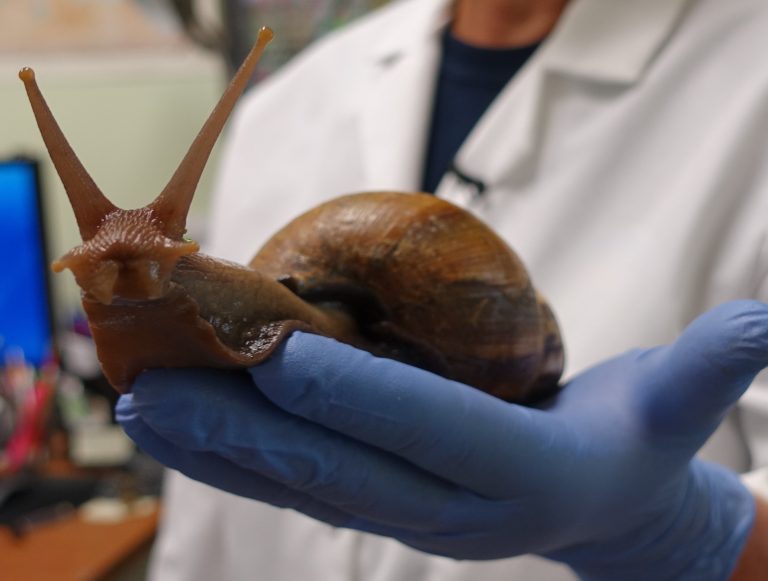On June 24, Pasco County in Florida was placed under quarantine due to the discovery of a fast-growing population of invasive giant African land snails that threatens both the environment and the county’s inhabitants.
The snail was first identified in the region on June 23, the day before the quarantine was put in place. These rat-sized snails may pose a health hazard to people, especially those who keep them as exotic pets.
Slow invaders, big problem
There are three species of giant African land snail on the continent of Africa, and they are all considered a threat to agriculture in the U.S., the Indiana Department of Natural Resources (DNR) states on their website.
The giant snails can live up to nine years and can grow to be eight inches in length. That is big enough to fit in the palm of an adult human hand. They can lay around 1,200 eggs in a year.
Because of their tough exterior, the snails have little to no natural predators and due to their sturdy nature they have endured as a species.
Success
You are now signed up for our newsletter
Success
Check your email to complete sign up
The African land snail was first declared an invasive species in Florida in 2011, after they caused massive damage to the economy, costing the state of Florida around $10.8 million.
Public information officer, Christina Chitty, told CNN, that the snails “pose a health risk to humans” as they bring with them a parasite called rat lungworm, that can cause meningitis — an infection that causes swelling of the brain and spinal cord.
Meningitis is not always fatal, most people recover, however some can die from the infection. There is a risk that some may suffer permanent damage or disability, such as brain damage, loss of hearing, and some could develop learning disabilities, the Centers for Disease Control and Prevention (CDC) says.
READ MORE:
- Will Spotted Lanternflies Plague the Garden State in 2022? Maybe Not
- Invasive Chinese Snail Threatens Canada’s Lakes and Waterways
- Jellyfish Immortality: A Cycle of Life After Life
- Giant Goldfish Destabilize the Ecosystem, Requiring Them to Be Removed by the Thousands
Chitty believes that the snails came from the illegal pet trade. The snail is considered an illegal pet in the U.S. This does not stop some pet owners from keeping them though.
Chitty said that the department will investigate the population and confirm how many snails are in Pasco County.
In addition to disease, the snails are also capable of destroying local agriculture. They have a very aggressive diet, being able to eat at least 500 types of plants, like peanuts, beans, cucumbers, and melons, the Indiana DNR said. They will go for trees and other plants if fruits and vegetables are not available.
They are even reported to eat paint and stucco on houses, as they contain calcium.
Under quarantine, residents are not allowed to “[move] plants, soil, yard waste, debris, compost and building materials outside the designated zone,” Metro wrote. People are also told to contact the FDACS hotline should they find any giant snails. Residents are told to wear gloves if handling the snail to avoid contracting meningitis.
Chitty also said that the FDACS is planning to use the pesticide metaldehyde to treat the soil and wipe out the snail population. Residents within the planned treatment area will be warned in person, or given a posted notice around 24 hours in advance before the pesticide is used.
“The goal is to eradicate” the snails, Chitty said. “It is a comprehensive and extensive process.”
Previously, in 2011, Florida was hit by a giant snail outbreak in the Miami-Dade County area. It took the county ten years to finally eradicate the population.
The snails in Miami-Dade County had gray-colored flesh, but the ones in Pasco County have white flesh, Chitty says.
















